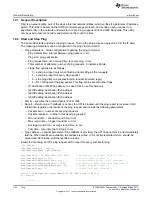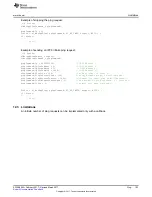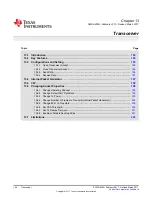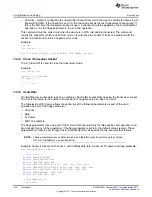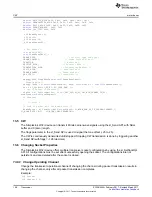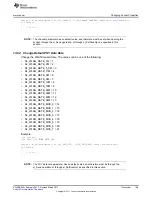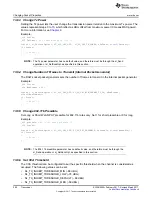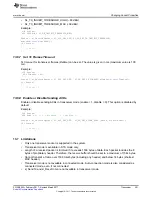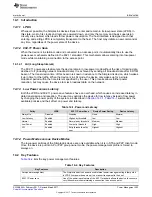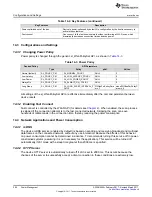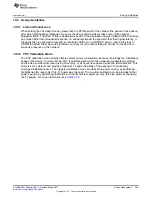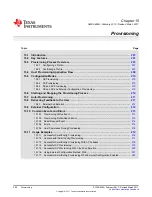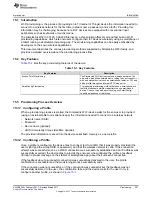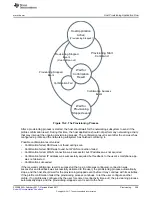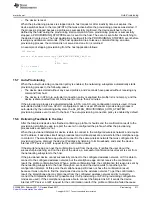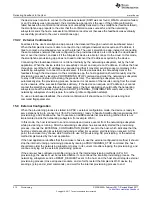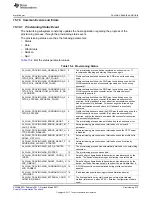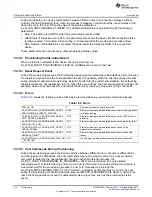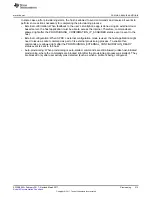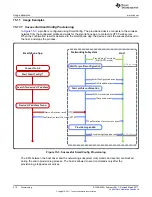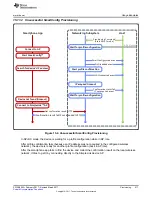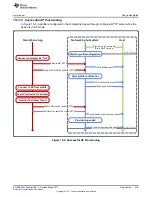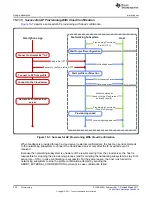
Design Guidelines
205
SWRU455A – February 2017 – Revised March 2017
Copyright © 2017, Texas Instruments Incorporated
Power Managment
14.5 Design Guidelines
14.5.1 LSI and Packet Loss
When setting the LSI sleep time as greater than the DTIM period of the network (the period of the beacon
after which all broadcast messages are sent), the device will most likely miss some of the network
broadcast traffic. The effect of this is application-specific: if the application always initiates traffic and relies
on unicast rather than broadcast response, no behavioral impact is expected other than higher latency. If
the application is expected to respond to unsolicited traffic (run a UDP/TCP server, respond to pings or
mDNS) the effect might be more significant, and may result in clients failing to connect to the device or
sense its presence on the network.
14.5.2 PHY Calibration Mode
The PHY calibration mode directly affects system power consumption, because it prolongs the initialization
phase of the device. In normal mode, PHY is calibrated every time the networking subsystem is started
and the device was either reset (using nShut pin), or 24 hours have passed since the last calibration. This
mode is set by default, and provides maximum Tx power flexibility at the expense of occasionally
prolonged initialization time. The triggered calibration mode provides more power saving, by performing
calibrations after reset only if the Tx power was changed. The one-time calibration mode provides further
power savings, by performing calibrations on the first system power up only (this also prevents changing
the Tx power). For more information, see
.


